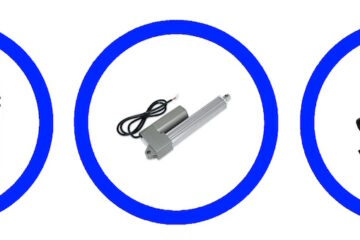Streaming is the act of listening to audio or viewing video content online without downloading the respective media files. This technology offers continuous transmission of video and/or audio files. Through various technologies, the quality of a stream can be enhanced and buffering reduced. Audio or video files are first played on the user’s device, where they are stored, and then streamed as they are played to the viewer over the internet.
Over the years, streaming moved from just a few bytes of sound or video files to the high-definition videos that are being transmitted today. Streaming is more efficient, as it does not require the file to be stored on the user’s device for it to play. Second, the file playing does not need to load on the browser, and the information that makes it to the browser is not stored locally. These two features make it possible to play long files of high-quality content without incurring the costs of downloading the underlying files.
How Streaming Works
Streaming works like any other data that is sent over the internet. The video or audio file is broken down into data packets, each of which contains a small piece or part of the entire file. When the data reaches the browser player, it takes in the packets, combines them, and interprets the data. These data packets are way smaller than the actual audio or video files that move through them.
The use of technology has made it possible for streaming companies such as Netflix to have the same content sent to thousands of customers around the globe without giving up the rights to the streamed content. In the same way, online casinos stream table games that are held at physical studios so that their users can bet on the said games.
Kick.com streaming platform, along with Twitch, use a similar method to get content on their platforms. Streamers share screens of the games they are playing, which are sent to the specific streaming platform, which then showcases the same to their followers. This way, the followers are able to see everything that the gamer is doing in real time.
Technologies behind Streaming
There are two protocols commonly used in the streaming of videos and audio content: TCP and UDP. These two are transport protocols that move packets of data across networks and are used along with the internet protocol (IP). TCP opens up a dedicated internet connection to transmit data. This ensures that all packets arrive at their destination in the order they left.
TCP is the best choice when you are looking at the reliability of your streams and where you want to capture all the data. It is commonly used in mission-critical streams as no packets are lost along the way. However, this requires a reliable connection, and it may take longer for the data to be streamed through this protocol.
UDP, on the other hand, transmits data to the recipient but may drop some packets on the way if there is a problem with the connection or system congestion. This means that the end user will see the footage, but it may be broken, buffering for a significant period or of lower quality. The advantage of this protocol is that it is fast and enables viewers to get content even with low connections.
Streaming platforms such as YouTube and Vimeo offer videos in various quality levels depending on your internet speed. The lower quality and buffering are indicators of a poor connection, but you may eventually watch the content after it loads.
Types of Streaming
The type of streaming varies according to the technologies supporting each. Some streaming technologies and formats are open source, while others are proprietary. Here is an overview of the most popular streaming formats.
- HLS: It is also called the HTTP Live Streaming platform. It was invented by Apple and utilizes a HRML5 streaming player. Consequently, it is the most popular platform.
- RTMP: This is called the Real-Time Messaging Protocol and delivers content via the Adobe Flash Player. As the Flash player reached the end of its life, RTMP was removed from streaming players. However, the protocol is used as an ingest tool with HLS.
- RTSP: This protocol was created to carry user commands to the video player. It also enables viewers to watch content before it is fully downloaded. The technology is vital for the Internet of Things, as devices such as IP cameras will be receiving commands online.
- MPEG-DASH: The DASH stands for Dynamic Adaptive Streaming while MPEG stands for the inventor. It enables streaming over HTTP, like HLS. However, it has an adaptive bitrate that enables viewers to watch content at a quality that suits their internet speed.
What is Buffering?
Buffering is a situation where the streaming player loads the video to be played a few seconds or minutes ahead of the content so that it can continue playing it after the connection has been interrupted. This is vital to smooth-playing content when the internet connection is not reliable. All videos buffer. However, you notice it when there is a slow connection or a great deal of latency.
What Factors May Slow Your Streaming?
There are several issues that may slow down the content that you are streaming. Here are some of them:
- Network latency: Latency is the amount of time it takes for the data to pass from one point of the network to another. Content packets need to reach the destination to enable the video or audio to play. Therefore, a high latency will slow the stream.
- Network congestion: If there is too much data sent over a network, it may become degraded, which affects its performance.
- Hardware processing power: Devices take a sizeable number of resources to play videos. If the hardware resources are shared among several applications or are poor, the quality of the stream may be poor.
- Lack of enough bandwidth: You need anything between 1 Mbps and 4 Mbps of bandwidth to play video content, depending on the quality of the stream. High-definition videos require more bandwidth.




1 Comment
Gambling Grew Under the Huge Influence of Modern Technology – Up & Running Technologies, Tech How To's · February 11, 2024 at 11:29 pm
[…] wonder? It is easy with the technological advancements that made this possible. Casino operators utilized the streaming technology and embedded the chat options in their interface. The easier part was to place a real dealer in […]